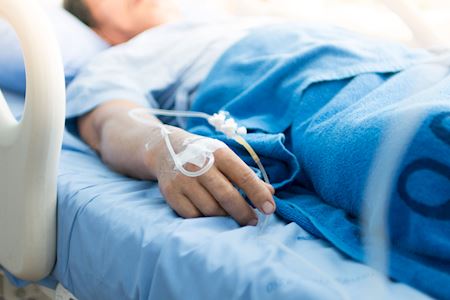 1. Viral hepatitis was seen in two siblings. Jon acquired hepatitis type A in an endemic area from ingesting food or water containing contaminated human fecal matter. Laura contracted type B hepatitis from a navel piercing from unsanitary conditions. Either the equipment was contaminated or the person(s) involved in the piercing procedure were carriers of the virus, or possibly both.
1. Viral hepatitis was seen in two siblings. Jon acquired hepatitis type A in an endemic area from ingesting food or water containing contaminated human fecal matter. Laura contracted type B hepatitis from a navel piercing from unsanitary conditions. Either the equipment was contaminated or the person(s) involved in the piercing procedure were carriers of the virus, or possibly both.
2. The symptoms of the various forms of hepatitis are very similar. They include nausea, vomiting, weight loss, jaundice and tiredness among others.
3. The diagnosis of the disease was made by two medical doctors specializing in internal medicine. One had a sub-specialty in infectious diseases. The elevated liver enzymes indicated damaged hepatocytes and subsequent diminished liver function. Both patients showed some jaundice due to a build-up of bilirubin in the skin. Tests showed the presence of the virus because the immune system reacted to the virus's presence by forming antibodies, or by demonstrating viral particles circulating in the patient's serum. As you recall, the IgM immunoglobulin class of antibodies appear early in the course of the disease then gradually decline. On the other hand, IgG antibodies rise later and are those responsible for lasting immunity.
4. Treatment consisted of replacing fluids lost through dehydration from vomiting and diarrhea. Rest and nourishment eventually restored both patients to a healthy state. In some patients, the administration of the substance alpha-interferon may improve the course of the disease, particularly with hepatitis B and C.
5. The prognosis for recovery from hepatitis is very good, especially in otherwise healthy individuals such as Jon and Laura.
6. Prevention is based on avoidance of risk factors. Hepatitis B protection can be acquired through a vaccine. In most states, it is required for all healthcare professionals. Additionally, a vaccine for hepatitis type A is available. Unvaccinated individuals should exercise caution when in endemic areas by avoiding possibly contaminated food and drink from unreliable sources.
7. Two physicians collaborated in this case to form a diagnosis. Both had specialties in internal medicine, but one of the physicians also had a specialty in infectious disease. Nurses were responsible for treating many of the symptoms including administering medications and intravenous fluids. Medical laboratory technologists were responsible for the liver function tests as well as the diagnostic hepatitis antigen and antibody tests.
